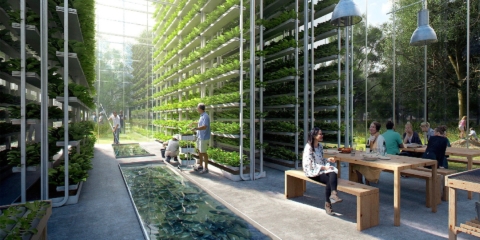Would you like to get notifications from Christian?
In the United States, 17 people die daily waiting for an organ transplant. This is a problem because the organ transplant waiting list is only growing. Every nine minutes, another person is added to the transplant waiting list. This desperate need for organs has led some researchers to 3D printing as a potential solution.
The thinking behind 3D printing organs is that if biomaterials can be 3D printed in complex shapes, they might be able to support cells and form tissues. This would, in theory, alleviate the organ shortage. However, attempts so far have fallen short. The problem is that the bulk hydrogel bioinks used in 3D printing have failed to integrate properly into the body. They also haven't been able to support cells in thick tissue constructs.
However, there is now hope! Penn State researchers have developed a novel nanoengineered granular hydrogel bioink. This new bioink uses self-assembling nanoparticles and hydrogel microparticles, or microgels. This combination results in a 3D printing material that can be appropriately integrated into the body. Additionally, this new 3D printing material can support cells in thick tissue constructs.
This is a significant breakthrough in the 3D printing of organs. With this new bio-ink, we may finally be able to 3D print organs that are functional and can be used for transplant. This could potentially save thousands of lives every year and reduce a lot of suffering.
The researchers are still working on optimizing the bio-ink. They hope to have a final product within the next few years. However, it will likely be a few more years before this technology is available for transplantation.
What do you think? Do you think 3D printing organs is a potential solution to the organ shortage? Do you think this new bio-ink will be able to successfully 3D print organs? Let us know your thoughts in the comments!
Author: Christian Kromme
First Appeared On: Disruptive Inspiration Daily
Christian is a futurist and trendwatcher who speaks about the impact of exponential technologies like AI on organizations, people, and talents. Christian tailors his presentations to your audience's specific industries and needs.



Our world is changing at an exponential rate! A big tidal wave of digital transformation and disruption is coming at us fast. Many organizations see this wave as a threat and experience stress, but there are also organizations that just see this wave as an opportunity.

Imagine sitting with just 10-15 fellow executives at a premier location, gaining clarity on the impact of AI on your industry while enjoying an exquisite dining experience. These are not just meetings—they are transformative moments that will shape the future of your organization



In the future, 3D printing and generative design will allow for products to be designed in a more decentralized manner, and production will take place closer to the customer and fully on-demand. 3D printing technology will also allow for more customization and personalization of products.


The agricultural industry is ripe for disruption. Robotics, AI, and IoT are all technologies that have the potential to radically transform the way we grow food. In combination with vertical farming, these technologies could increase the efficiency and quality of agricultural products.

A human-centered society is one that puts people first and where technology is used to unite and empower people. It is a society that values biological life and dignity above all else. It is a society that recognizes the importance of human relationships and works to strengthen them. In a human-centered society, all members of the community are valued and treated with respect.


The future of healthcare is here. New technologies like AI, IoT, big data, and smart sensors make it possible to become the CEO of your own health. Imagine that your phone can listen to your voice and AI algorithms can detect small nuances in the tone of your voice that indicate specific diseases.
